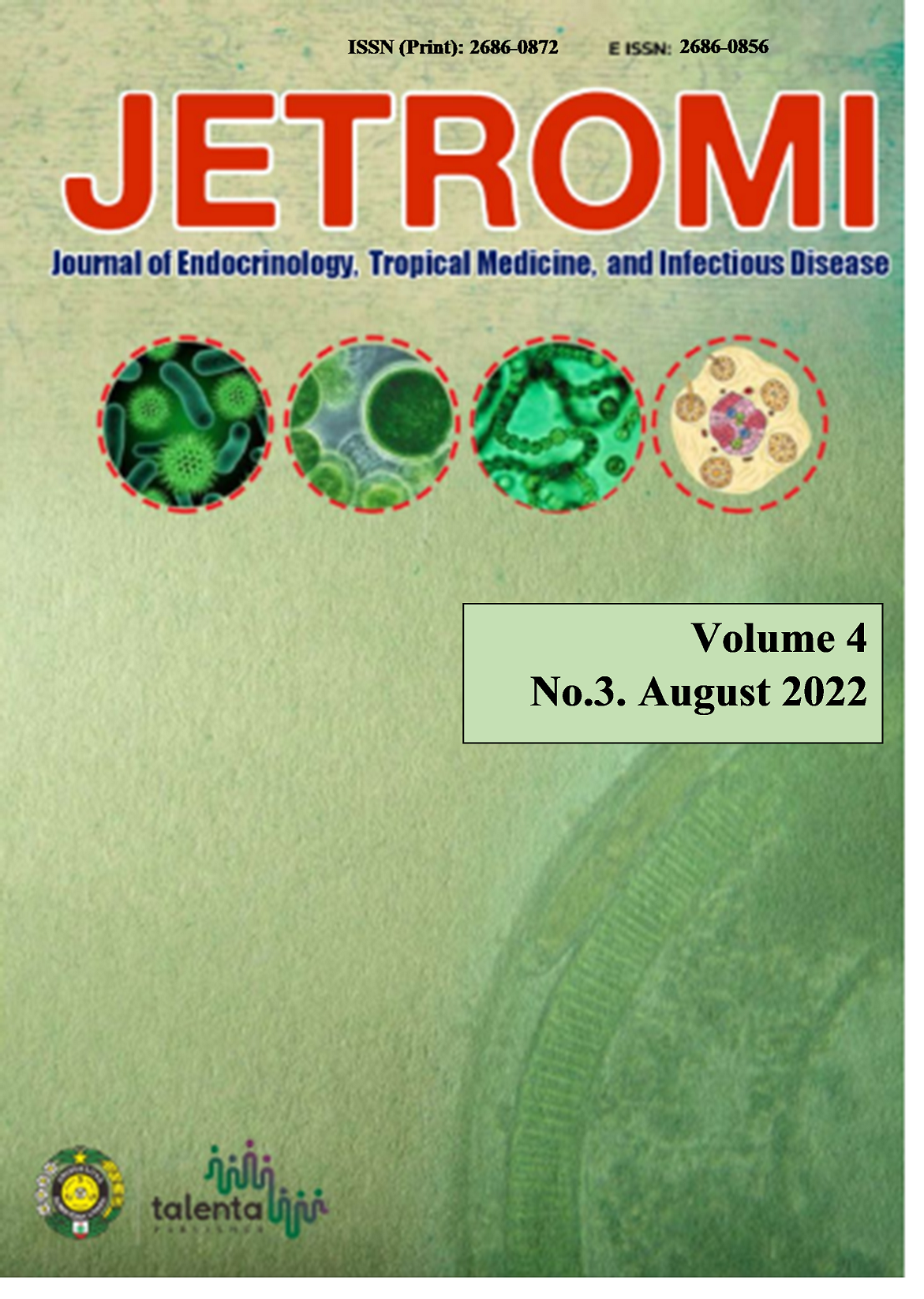Bacterial Contamination on The First-Year Internal Medicine Residents’ Scrubs at H. Adam Malik Medan General Hospital
DOI:
https://doi.org/10.32734/jetromi.v4i3.12490Keywords:
Keywords: Bacterial contamination, scrubs, nosocomial infection.Abstract
Background: The doctor’s white coat was known to be a source of nosocomial infection. Despite many studies’ results have shown the presence of bacterial contamination on the doctor's white coat, there was little research about bacterial contamination on the doctor's scrub. This study aims to investigate bacterial contamination on the scrubs of first-year residents of the Internal Medicine Department worn for one shift (17 hours).
Method: This is a descriptive study on the first-year residents' scrubs which was conducted in January - February 2021 at H. Adam Malik Medan General Hospital. Samples were taken from the sleeves and pockets of the scrubs and programmed software was used to identify the amount, percentage of bacterial contamination, and bacterial species. Data were analyzed using the SPPS version 21.
Result: Of the 31 first-year residents' scrubs that met the inclusion criteria, 79 colonies (50,6%) of bacterial contamination was found on the sleeves and 77 colonies (49,4%) in the pockets of the scrubs. Bacteria found on the scrubs are coagulase-negative Staphylococcus, Bacillus sp., Staphylococcus aureus, Acinetobacter Iwoffli, Pantoea sp., Acinetobacter baumanii, Klebsiella pneumaniae, Oligella ureolytica, and Pseudomonas stutzeri with the most common bacterial colonies found both in sleeves and pockets were coagulase- negative Staphylococcus (220.935 ± 180.56 and 289.09 ± 181.57).
Conclusion: Bacterial contamination was found mainly on the sleeves of the scrubs with coagulase-negative Staphylococcus as the most contaminating bacteria and this should be taken into consideration as this strain could cause severe infection, especially in immunocompromised patients.
Downloads
Downloads
Published
Issue
Section
License
Copyright (c) 2022 Journal of Endocrinology, Tropical Medicine, and Infectious Disease (JETROMI)

This work is licensed under a Creative Commons Attribution-NonCommercial-ShareAlike 4.0 International License.
The Authors submitting a manuscript do so on the understanding that if accepted for publication, copyright of the article shall be assigned to Journal of Endocrinology, Tropical Medicine and Infectious Diseases (JETROMI).
Copyright encompasses exclusive rights to reproduce and deliver the article in all form and media. The reproduction of any part of this journal, its storage in databases and its transmission by any form or media, will be allowed only with a written permission from Journal of Endocrinology, Tropical Medicine and Infectious Diseases (JETROMI).








